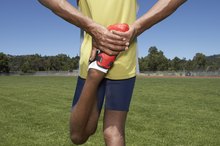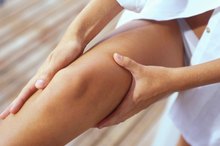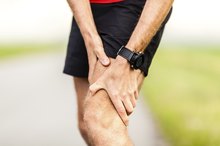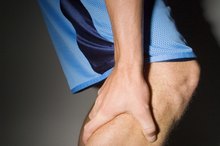What does fact checked mean?
At Healthfully, we strive to deliver objective content that is accurate and up-to-date. Our team periodically reviews articles in order to ensure content quality. The sources cited below consist of evidence from peer-reviewed journals, prominent medical organizations, academic associations, and government data.
- Linus Pauling Institute Micronutrient Information Center: Magnesium
- Linus Pauling Institute Micronutrient Information Center: Glycemic Index and Glycemic Load
The information contained on this site is for informational purposes only, and should not be used as a substitute for the advice of a professional health care provider. Please check with the appropriate physician regarding health questions and concerns. Although we strive to deliver accurate and up-to-date information, no guarantee to that effect is made.
Why Does Having Too Much Pineapple or Grapefruit or Orange Juice Increase My Leg Cramps?
Pineapple, grapefruit and orange juice are nutritious beverages and natural sources of potassium and vitamin C. Too much of these juices, however, may increase painful leg cramps in certain situations. Leg cramps do not usually require medical attention, but you should see a doctor if you cannot figure out the cause of your cramps.
Background
Leg cramps are may develop during repetitive exercise, when you do not move your muscles for a long time, such as:
- while you are sitting at a desk,
- overnight while you sleep
- according to MayoClinic.com
They may result from nerve compression, dehydration and mineral deficiencies. Water is the best fluid for hydration, according to Iowa State University, and your leg cramps may get worse if you drink juice instead of a higher volume of water. During exercise, your muscles get some of their fuel from glycogen, which is the storage form of carbohydrates in your body. When your muscles run out of glycogen to use for energy, they may become tired and more susceptible to cramping.
- Leg cramps are may develop during repetitive exercise, when you do not move your muscles for a long time, such as: * while you are sitting at a desk,
* overnight while you sleep
* according to MayoClinic.com They may result from nerve compression, dehydration and mineral deficiencies.
Glycemic Index
What Are the Causes of Leg & Foot Cramps?
Learn More
Pineapple, grapefruit and orange juice may make your leg cramps worse if you drink too much before an exercise session. The glycemic index of foods with carbohydrates indicates how much the food can lead to spikes in your blood sugar levels, according to the Linus Pauling Institute Micronutrient Information Center 12. Low-glycemic foods, such as:
- whole grains
- beans
- dairy products
- some whole fruits
- are better for promoting glycogen storage than high-glycemic foods
- Iowa State University notes
Processed foods, such as fruit juices, have higher glycemic values than fresh counterparts, such as whole fruits. High-glycemic foods before exercise can make leg cramps worse.
- Pineapple, grapefruit and orange juice may make your leg cramps worse if you drink too much before an exercise session.
- The glycemic index of foods with carbohydrates indicates how much the food can lead to spikes in your blood sugar levels, according to the Linus Pauling Institute Micronutrient Information Center 1.
Glycogen Storage Diseases
A glycogen storage disease is a genetic disorder with abnormal glycogen storage or use, according to NYU Langone Medical Center. Symptoms may include low blood sugar, fatty liver and muscle cramps. Some individuals with glycogen storage diseases must avoid lactose, which is the natural sugars in milk, and fructose, which is a natural sugar in fruit. If you have a glycogen storage disease, too much pineapple, grapefruit or orange juice can make your symptoms even worse.
- A glycogen storage disease is a genetic disorder with abnormal glycogen storage or use, according to NYU Langone Medical Center.
- Some individuals with glycogen storage diseases must avoid lactose, which is the natural sugars in milk, and fructose, which is a natural sugar in fruit.
Mineral Depletion
What Are the Causes of Leg Spasms?
Learn More
You may get more cramps if you drink too much juice instead of including other nutritious beverages or foods for a wider variety of nutrients. According to MayoClinic.com, leg muscle cramps may occur if you do not get enough calcium and magnesium in your diet. Milk is a good source, but pineapple, orange and grapefruit juice are not naturally rich in these minerals. A sports nutritionist can analyze your diet and work with you to develop a nutritionally adequate meal plan to reduce your risk for leg cramps.
- You may get more cramps if you drink too much juice instead of including other nutritious beverages or foods for a wider variety of nutrients.
- A sports nutritionist can analyze your diet and work with you to develop a nutritionally adequate meal plan to reduce your risk for leg cramps.
Related Articles
References
Writer Bio
Natalie Stein specializes in weight loss and sports nutrition. She is based in Los Angeles and is an assistant professor with the Program for Public Health at Michigan State University. Stein holds a master of science degree in nutrition and a master of public health degree from Michigan State University.









